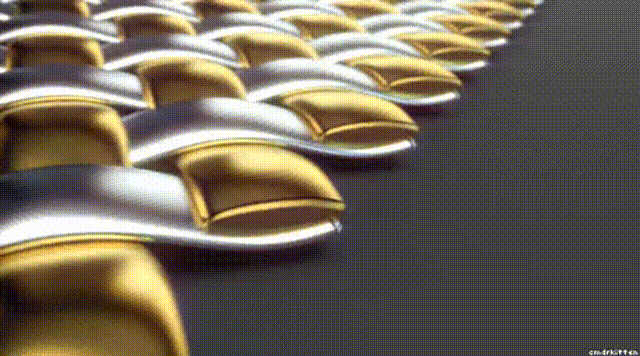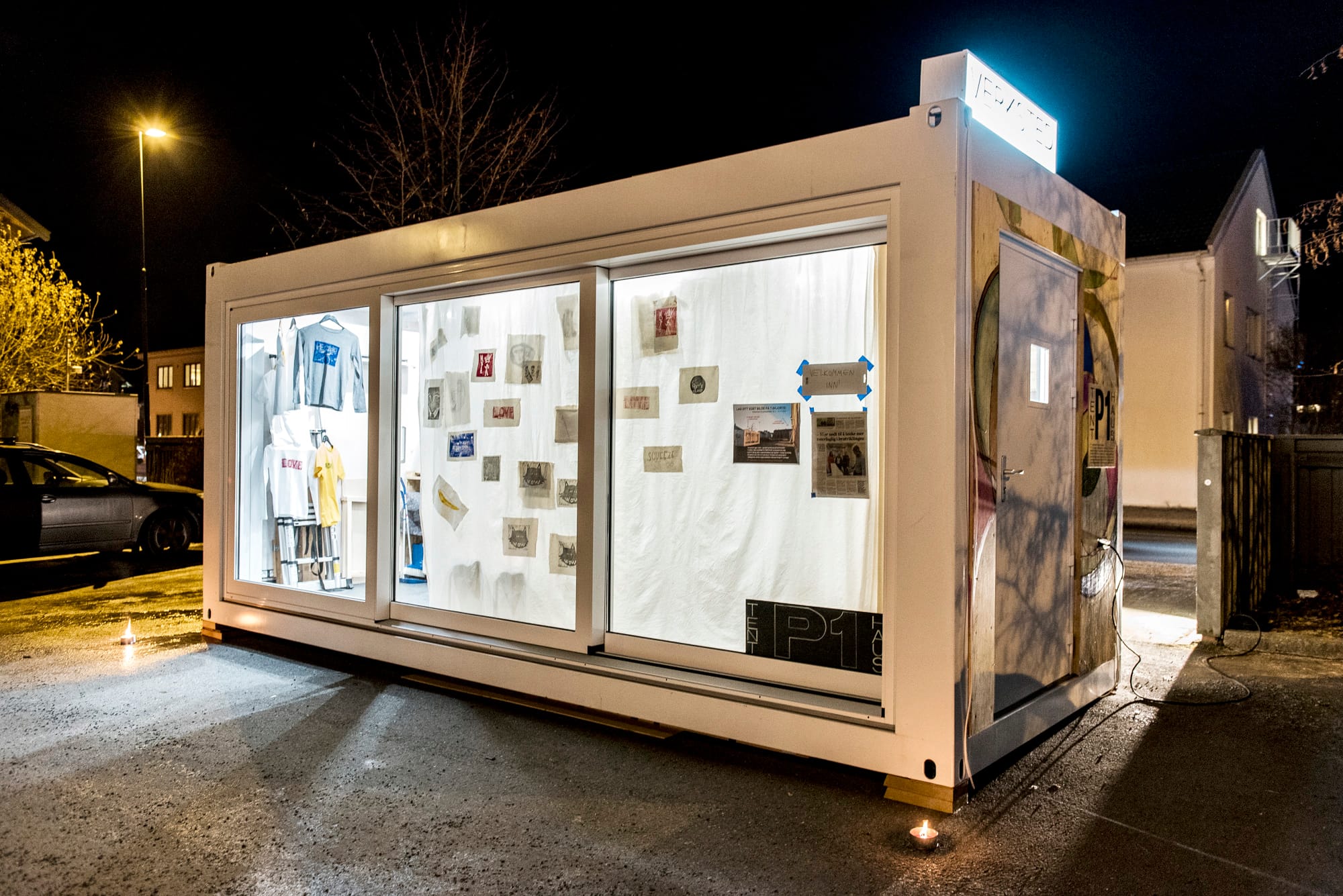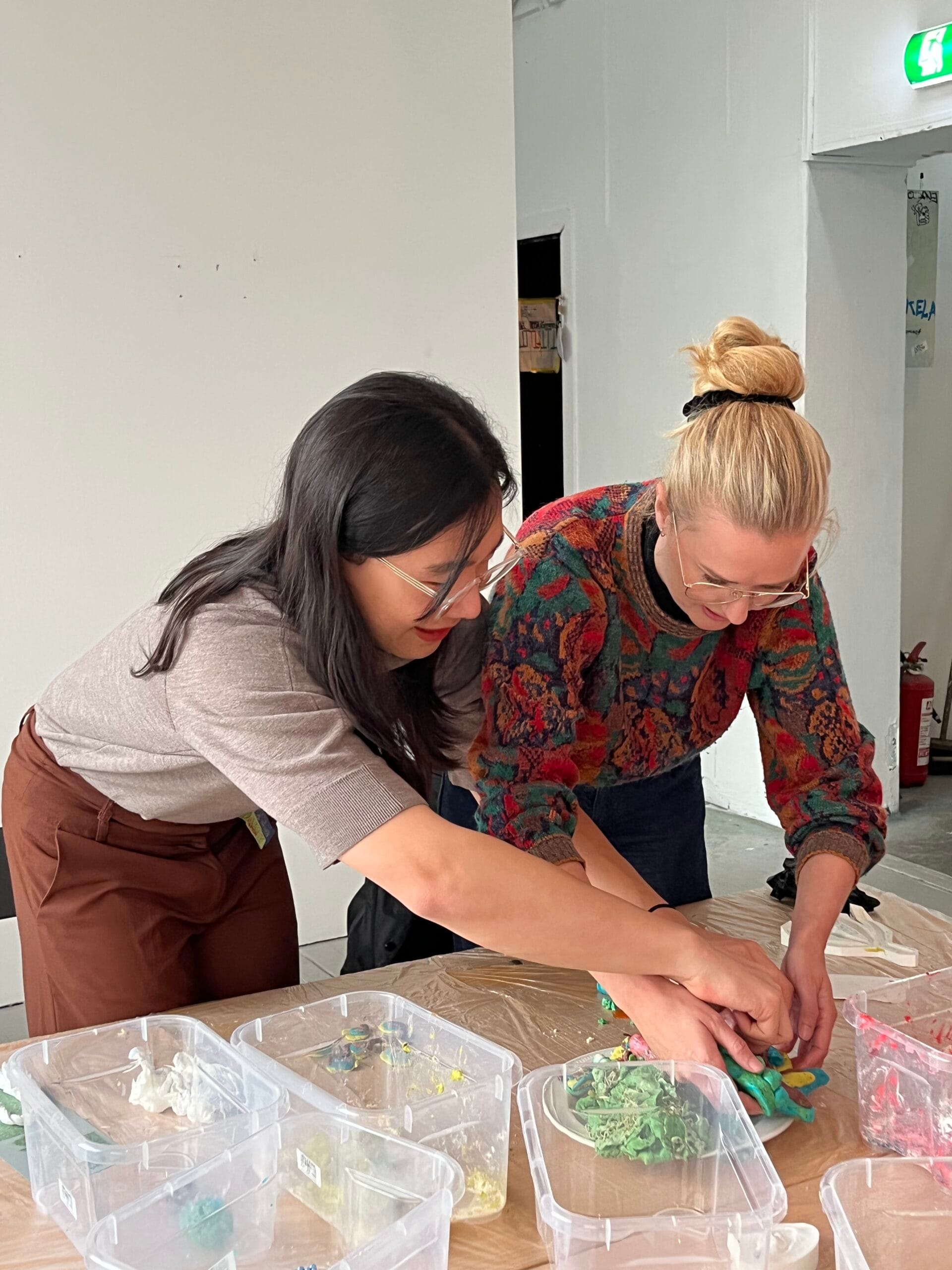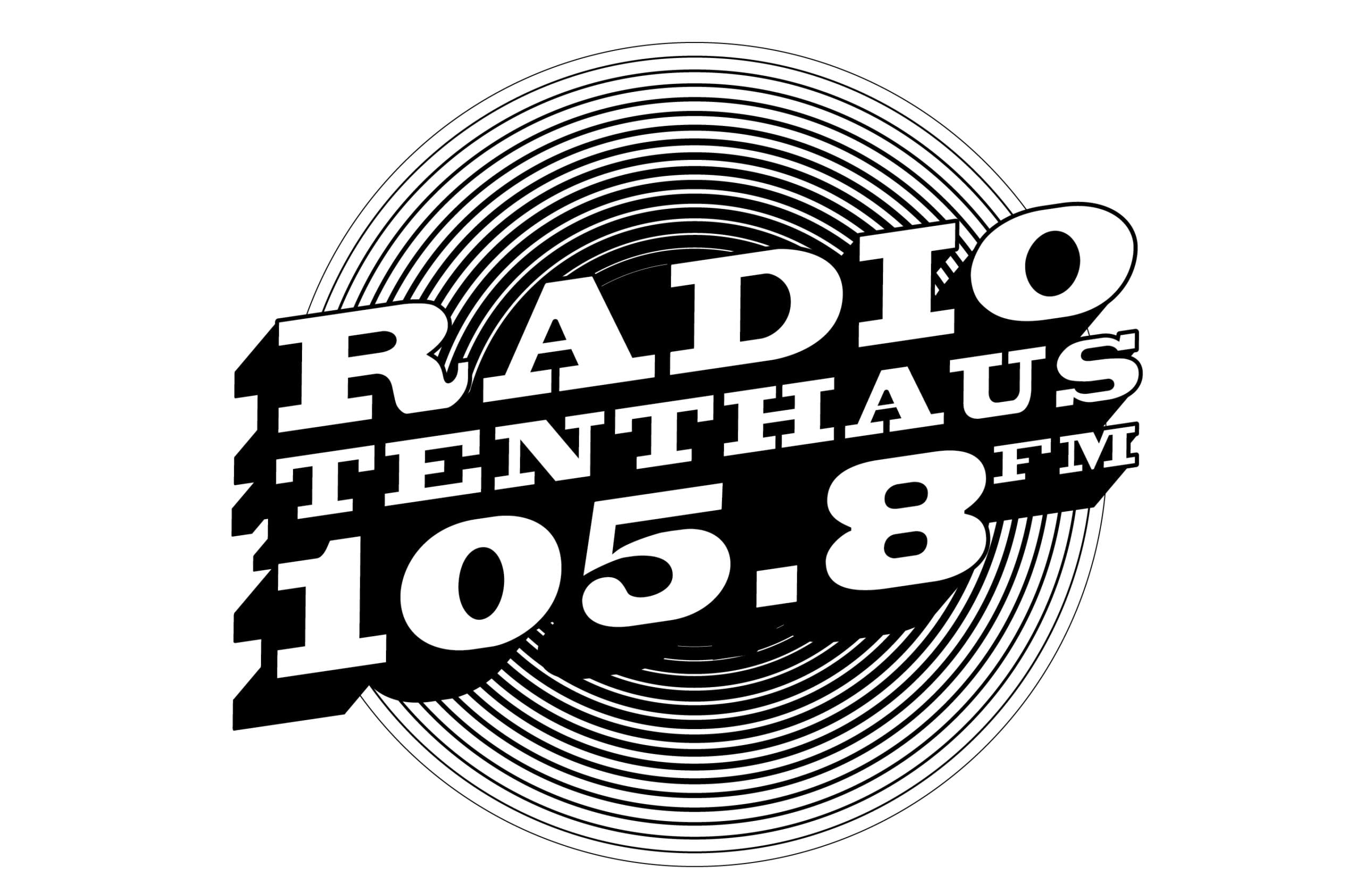(143)

(142)
Brené Brown is a “researcher, storyteller, and (currently enraged) Texan who’s spent the past two decades studying courage, vulnerability, shame, and empathy” acording to her website.
(144)
The P1 mobile studio

(145)
As part of the Post Design Tangle chapter 2 in Oslo, Noam Youngrak Son facilitated the workshop ‘Chimera Gastronomy: Malleable flesh, amalgamated bodies, and plastic kinship’, where the participants worked individually and collectively on a large malleable body sculpture.

(146)
Radio Tenthaus is a discursive radio program talking to artists from different disciplines and backgrounds from sound to visual art, text, spoken word and more. It broadcasts every Tuesday from 20:00-23:00 pm on local Oslo radio 105.8FM and online.

Excavating A Collaborative Practice: Discovering The Individual Within The Collective
Interview with Jacky-Yuan Kuo and Valentina Martinez from Tenthaus
Speaker at chapter 2: Self
September 2022
Words by Bethany Rigby
The artist collective Tenthaus, represented by artist Jacky Jaan-Yuan Kuo and artistic researcher Valentina Martinez, gave a talk at the second chapter of the Post Design Tangle, which took place in Oslo in September 2022. Afterwards we checked in with Jacky and Valentina to learn more about their thoughts on collectivity, collaboration and how to know whether what you are doing is working.
You discussed in length about how your personal situations of immigration, language and adaptability lend themselves well to working professionally within a tight-knit collective. Has there been any flow in the reverse direction; perhaps something developed from this collective way of working that has altered the way you interact with people within non-professional capacities?
Valentina: I guess I have become a lot more aware of the weight of consensus and communication in the other parts of my life, but also on how interconnected my personal and professional life is. Because I work and meet with people in the art world both professionally and personally all the time, everything is quite intertwined. I am aware that I have to be coherent with what I do and communicate
Jacky; as you have a background in graphic design we wanted to ask if you think there is anything designers can learn from the way artists seem to more often form collectives and community-oriented practices? Or is this even true? We don’t need to draw hard lines between art and design, but as someone who works in both fields is there anything you have noticed that design practitioners can learn from?
Jacky: There are way various practices in different expressions really depending on one’s preference and relations too, but for what I have experienced the most exciting in collective and community-oriented approach is that to let the trust to the Others, see the spontaneousness and clearity foster along with its corresponding responsibility. I enjoy and am still on the way to learn to reach a balance in-between loosing control and welcoming different interests and voices, and if more and more people could do so, to some extents the caring and love in culture would be generated, and further shared.

We spoke briefly about metrics for gauging the longstanding effects of Tenthaus’ projects once temporary engagements with communities have ended and how the collective as a whole – I’m interested to know how individually you reflect on projects following their conclusions? Is it more of an emotion or a general feeling, or do you have your own measures for ‘success’ from a project? How do you keep a record personally of the work you do within the collective?
Valentina: Individually, I would gauge the success of a project by the willingness our collaborators have to engage with us or me in new projects in the future. I would also try to keep track at how easy it was for the community to adopt the project and continue with it themselves.
Jacky: I haven’t been in the collective that long, and I’ve undertaken a couple of projects that have lasted over time (P1, for example), so I don’t have a lot of projects to go over, but I have updated what I’ve done at Tenthaus on my CV, and that’s how I’ve been keeping track.
Valentina; you mentioned that Tenthaus is an opportunity to develop your individual creative practices/ CV’s whilst working on collective projects for “when you grow up”. What are both of your dreams for your practice post-tenthaus?
I would like to secure a sustainable practice both as a dance artist and as a facilitator for art in different everyday contexts. I would like to gain access to institutional work, whilst maintaining some freedom and flexibility for my own individual and collective practice. I see being part of a collective as an important practice for the field, and I see myself continuing to engage into collective practices in some way.
From your time in Oslo, are there any specific moments- perhaps in conversations with other speakers- that really resonated with you, or have changed the way you think about your practice?
Jacky: It was really fruitful to be in the programmes in the POST Design Festival, I was pretty inspired by how the self-organisation had been entailed smoothly by the team POST. It is never easy to take care of every part in an event in order to initiate an environment that is safe and inclusive, yet I experienced a well cooperation between the team members – from the audience-hosting and moderating (both offline and online immediate interaction), the flows of the lineup that swung in-between deep reflectiveness and openness to the room, to the transformation of a workshop site being as a transient exhibition and a closing party. These process-oriented and self-orginising approaches of co-shaping atmospheres really echo my personal practices, and this is what I will continue learning from and keep returning to.
Finally, can you recommend any episodes of Radio Tenthaus that we should catch up on?
106: When violence is the only tool, where it shares a TedTalk by Tim Larkin. has an interesting perspective on in which situations is the tool of violence worth using and how. Otherwise please stay tuned because as part of MOMENTUM 12, Radio Tenthaus will be releasing a series about how art found different of us at Tenthaus and artists that we will be working with in the biennale
Back to grid

